ECON6000 Economics Assessment Sample
Question
JobKeeper payments have been extended until 28th March 2021. This purpose of this grant is to ensure that all the businesses and non-profit organisations significantly affected by COVID-19 remain adequately supported. This said, not all the Australian residents are eligible. Eligibility criteria says that you have to be either an Australian citizen or a permanent resident or hold a Protected Special Visa.
You are a Business Economics Analyst working in ABC Company. The senior management of this organisation wants you to prepare a report to help the management understand how this JobKeeper payment can affect their employees. Your reasoning should indicate whether JobKeeper grant would help improve income elasticity of demand. Finally, as the company employs many temporary visa holders and student visa holders on a part-time and full-time basis, the senior management also want your recommendation surrounding the grant of JobKeeper payment to all categories of employment irrespective of their visa status.
Your report should cover the following:
1) What is your understanding of JobKeeper payment and the eligibility criteria for JobKeeper grant? Should JobKeeper be given to those working full-time or part-time irrespective of their visa status? If so, will this affect overall market demand or not? Do JobKeeper grants have an impact on individual demand, supply and price? If so, are there likely to be significant changes or will the impact be minimal? Provide examples to support your answer. Use appropriate supply and demand diagrams to explain your views. Do not cut and paste diagrams from external sources. Ensure that your diagrams are professional.
2) What is the impact of JobKeeper on income elasticity and price elasticity? Is demand elastic or inelastic? Provide examples to support your answer. Will people use the substitution effect to manage affordability or will there be no impact on buying capacity? Provide reasons to support your answer. Use diagrams to explain your
views. As in the previous case, please do not cut and paste diagrams from different sources.
Answer
Executive Summary
The Covid-19 pandemic affected the business and life of every individual. Based on this scenario, the Australian Government focused on the JobKeeper Payment scheme with reference to the demand and supply scenario into consideration. This report is based on giving guidance to ABC Company with regard to the means by which the respective senior management can distribute its grant of JobKeeping payment and continue its operations within the Australian market at large.
Introduction
The JobKeeper program designed by the Australian Government mainly entails businesses claim a fortnightly payment of a total of around $1,500 per eligible employee. This is mainly an attempt on part of the Government concerned to enable the residents to cope up effectively with such an economic crisis as a result of the outbreak of Covid-19 pandemic in no time thereby attempting to keep the productivity level intact. This particular report work focuses on giving guidance to ABC Company with regard to the means by which the respective senior management can distribute its grant of JobKeeping payment.
Question 1
Relate a brief understanding about JobKeeper payment and specify eligibility criteria for it. Coronavirus pandemic affected the business organisation where the motivation to be stable in the business jobs has become tough in Australia. Focusing on this context, the Australian Taxation Office (ATO) is focusing to develop a JobKeeper Payment Scheme that can focus primarily on providing a subsidy for the business organisations. The prime purpose behind such a grant is to ensure that all businesses and non-profit organisations that are significantly affected by Covid-19 manage to remain adequately supported as well as help the concerned workers that are attached with such organisations during such crisis periods (Petrov & Petrova, 2020, p.7644).
In addition to this, the behavioural responses are a major factor for the creation of incentives for the firms to force down the turnover rate that can provide access to the payments.It is mainly the residents of Australia who are eligible for JobKeeper payments. For enjoying the associated benefits of this particular scheme, besides the need of the person concerned to be a certified citizen of Australia, the other applicable options include the fact that the person concerned either should be a permanent resident or needs to have a Protected Special Visa.
Discuss effectiveness of JobKeeper payment on overall market demand and to whom it must concern
From the point of view of a Business Economics Analyst, it can be stated that the provision of JobKeeper payments to part-time or full-time employees irrespective of their visa status is deemed to be a necessary one. This is because such a scheme has eventually been initiated by the Australian Government to ensure that almost all organisations operating within the very economy are adequately supported. Now, employees, irrespective of their country of origin are undoubtedly considered to be building blocks of any organisation. For instance, the ABC Company can be seen to be run by several temporary as well as student visa holders on a full-time and part-time basis.
The sudden outbreak of Covid-19 has adversely affected almost every such individual. Thereby, in order to keep workings of the Australian economy in order through production of adequate amounts of goods or services within the geographic boundary of Australia, initiation of JobKeeper payment upon employees irrespective of their visa status is likely to prove effective with regard to maintaining the level of productivity throughout (Bekkers& Koopman, 2020, p.97).
Analysis of associated impact on market demand
The associated impact on overall market demand level is illustrated with the help of a diagram as follows:
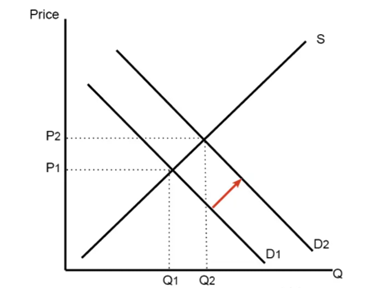
Figure 1: Impact on Overall Market Demand
(Source: Created by Learner)
With reference to the above figure, it can be seen that a provision of JobKeeper payment is most likely to indicate an increase in quantity demanded from Q1 to Q2 thereby shifting the demand curve rightwards from D1 to D2. Such an increase in quantity demanded bears high probability to impose a relatively high pressure upon the suppliers concerned owing to emergence of supply constraints backed by imposition of rules or regulations to avoid further spread of Covid-19 pandemic in this regard. This automatically seemed to have contributed to rise in corresponding market price of the products concerned from P1 to P2 guided by the sole motive of maintaining an equilibrium position within the existing market scenario. Besides this, such increment in price level accompanied by arousal greater demand from individuals getting insured by JobKeeper grants might also have been a result of costlier production process as a result of need for maintenance of certain safety norms while manufacturing the products.
With examples, analyse impact of JobKeeper grants on individual supply, demand, and price
Demand and supply rate is dependent on the ratio of business and production, where elasticity in the Australian economy rolled up to a new extent. In this portion, the sudden outbreak of the Covid-19 pandemic affected the Australian economy with the result in the unemployment generation that led to the prevalence of a situation where excess supply condition grew in the initial terms driving the decrease in the supply ratio (Hodder, 2020, p.268).
Due to this fact that employees in Australia are losing their jobs, it led to the generation of acute contraction where the economic scenario can get a chance of loss in the supply ratio and demand graph. Moreover, the introductions of JobKeeper payments are based on boosting the demand level of the individuals to some extent. In addition to this, the gradient increment undoubtedly shows an impact on the supply level of the products where the dependency on the sales in the market is broadly based on the services in the market and demand. To understand the extent of the impact of the change in demand from the supply level, it is important to focus on the following explanation:
Impact on individual demand, supply, and Price:
The JobKeeper grant is likely to enhance the level of purchasing power available in hands of the individuals at large. Such increment bears a high probability to show the corresponding impact upon goods of varied types. However, the associated impact upon supply level is unlikely to be high owing to the prevalence of supply constraints thereby contributing to enhancement of associated price level in order to maintain an equilibrium position.
Some of the scenarios are illustrated as follows:
Normal Goods: These goods are referred to as the kind of goods that experience an increment in their demand level due to the hike in the income of customers. The supply of normal goods is based on the factor of income elasticity where the hike in the income leads to the increase in the demand for the goods. The supply of these goods is most likely not affected by the exposure of the JobKeeper payment option in the business organisation of Australia (Mohner&Wolik, 2020, p.641).
Necessary Goods: These goods relate to the services or products based on which the customers need to purchase irrespective of the change in the income level. These goods are not affected by the change in income and remain constant during the changing business scenario as well as income stability. Thus, the changes in the demand are constant.
Inferior Goods: These goods refer according to the demand change and hence show a slight change in the income level. Moreover, there is an inverse relationship with the income level and decreasing income level leads to the increase in the supply of these products. Thus, the automatic shift in the business and income affects the supply curve towards the left leading to the increase in the supplied link.
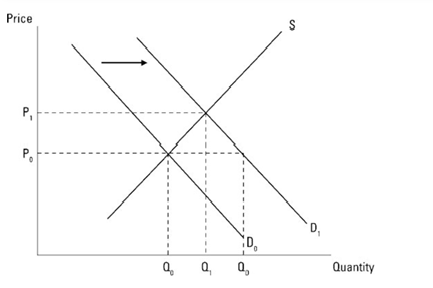
Figure 2: Impact on Individual Demand, Supply, and Price Level
(Source: Created by Learner)
From the above figure, it can be deduced that exposure to JobKeeper payment kind of initiated to individuals demands a greater number of products Q1 than before which was Q0. The supply level, to cope up with this excess amount (Q1-Q0), contributed to raising the price level from P0 to P1. For instance, it can be seen that Covid-19 was a lesson for the government of Australia where they need to focus on undertaking an initiative to boost the manufacturing sector of Australia, and in addition to this, it is estimated that $107 million is required to strengthen the supply in the required commodity.
For instance, the lump sum amount of investment is deemed to be ofgreat help onpart of businesses to prioritise the concept of both medical products and medicines thereby playing a vital role in boosting the needs of individuals. This is becausecritical supplies are based on boosting the stages of demand. Co-investment is based on the financial resources of the finished products where these concepts enable to fix the six-priority area of the government.
These include the following:
• Products that enable health such as medical products
• Critical and limited resources as well as resource technology
• Food and beverages
• Clean energy and recycling
• Space
• Defense
From the above six priorities of the critical assessment, the manufactures in Australia have risen to address the challenges that can deliver manufactured products during the Covid-19 and even in the long-term scenario. In addition to this, presently the businesses are focusing on presenting the unlocked potential of delivering the essential materials for the future. Moreover, the delivery of each material is based on playing an important role in the development of strengths as well as strategically investing in boosting the role of technology or science in the industry (Rapacciniet al., 2020, p.231). In every aspect of the supply growth, it is important to focus on the change in the quality of the products. This can be supported by referring to the fact that clear supply effects owing to incidences such as closed factories, quarantines, impaired mobility, and disruptions witnessed in the supply chain have undoubtedly affected the level of production. Irrespective of the non-availability of consumer price index information for a number of months as a result of economic lags, the breakeven inflation expectations following the hit by Covid-19 shock has enabled obtain somewhat a brief idea about the actual workings of JobKeeper grants at large.
Question 2
With examples, point out the impact of JobKeeper upon price elasticity and income elasticity
Taking the case of Covid-19 into consideration, it can be reviewed that the individual needs to focus on the assessment of buying products in normal life. However, the current scenario of the business and income is continuously changing with the impact on the income as well as on the price elasticity. The current on-going scenario of the Covid-19 crisis impacts the daily wage with the exposure to the risk scenario and loss in the work in Australia. The incorporation of the JobKeeper payment scheme is hence based on accessing the greater amount of financial resources.
Price Elasticity: It is referred to as the primary key of the economic measure that states the degree of responsiveness and the change in the quantity of the product purchased by the people and change in the demand price level.
Elastic Demand: It is a type of price elasticity where the quantity changes in the product or service are more than the change in the price level. The exposure to the Covid-19 crisis led to several issues that were balanced with the access to the JobKeeper Payment scheme that acted as a relief in controlling the economy of Australia. It is also observed that there is a decrease in the demand of an individual by households resulted instabilisation of the taxation and prices for better ranges (Rapacciniet al., 2020, p.227). For example, exposure to such an economic downturn made individuals reduce the demand level of luxury items such as branded apparel, luxurious home appliances, expensive branded watches, and cars from Ford Motor or Daimler thus making the people focus more on saving and limit the expectations.
Inelastic Demand: This particular kind of price elasticity focuses on the factors regardless of the increase or decrease in the price level of the products and service, the purchasing process remains the same irrespective of the nature of the small amounts.
The JobKeeper Scheme focuses on the exposure of all these uncertain economic scenarios leading to a minimal fall in quantity demanded. These changes are not discouraged by the customers in order to reduce the consumption of limited resources such as oil irrespective of the rise in the market price.However, irrespective of such an attempt on part of consumers to limit their expenses level, demand for medicines have shown a sharp rise irrespective of their market price level thereby indicating prevalence of the inelastic nature of demand for necessary or life-saving commodities even in such pandemic situation.
Income Elasticity: This income elasticity is related to the economic measure by giving an idea of the responsibility to exchange the goods and services based on the income level of each individual. The assessment of the JobKeeper payments plays an important role in the management of the individual part where the low-income background and other options of engaging the individuals in consumption and inferior products lead to the economic crisis at the initial phase of the lockdown. Thus, negative influence of the income elasticity focused on the economic crisis during the growth of lockdown.
With proper evidence and diagram, discuss whether people use substitution effect to manage affordability
The individuals, guided by the sole motive to afford the necessary products within the number of financial resources available in their hands, are likely to opt for the substitution effect. This is most likely to be guided by an initiative on their end to switch to alternative items that are as cheap as possible to cope up with such an economic crisis.
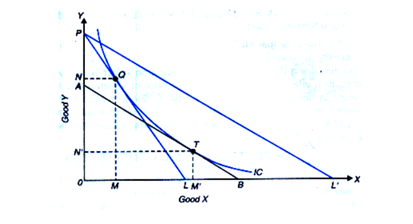
Figure 3: Substitution Effect to manage affordability
(Source: Created by Learner)
By referring to the figure above, the income effect shows an impact on quantity purchase as a result of a change in associated income level. This results in a movement to a different indifference curve (IC) backed by such change in the ability to purchase a given quantity of Good X against a new quantity of Good Y, which is a substitute of Good X. Besides this, prevalence of supply constraints in this regard has also been another major factor behind the emergence of such substitution effects as a result of partial curb down of various sectors.
Taking the Covid-19 pandemic scenario into consideration, it can be seen that such an outbreak affected the global business scenario with the influence on the global health of individuals. Based on this ratio, the manufacturing industry suffered from the changes in the lifestyle pattern and demand demographics. In addition to this, the complete scenario of the manufacturing business emerged as history and required a path to enable the business growth with the focus on availability of the stocks. In this ratio, the Australian Manufacturing sector focused on the concept of a modernised view of the workforce as the work criteria in the Chinese business manufacturing industry can be seen (Norouzi et al., 2020, p.101654).
Moreover, the initial analysis of the hit should focus on the results of Covid-19, where the Australian supply chain analysis provides a report of the major disruption of the demand structure. This can be due to the result of the limited supplies that the Australians are facing due to the huge crisis. Given this, domestic manufacturing is the major purpose for which the limited supplies and demand limitation can be an important factor. However, these results are limited to a point of supplies only. Thus, the period of crisis led due to the outbreak of Covid-19 emerged as a forced scenario with the decrease in the large percentage of manufacturing reduced. In addition to this, rapid adaptability is growing where the companies are associated to enlarge their particular industry so that they can ramp up the capability of the sector.
Based on the above analysis, the Australian Government adopted some strategies to initiate the growth of the individual industries. On this note, the Australian Government in order to refuel the economy based on taking the initiative so that it can move away from the short-term solutions that are cheap or indicate the overseas labour that focuses on the investment of the local system. Every bit of the business economic growth is based on the high profitability as well as on the solution that can particularly move the manufacturing sector on the local premises.
Conclusion
It can be concluded that the JobKeeper scheme is of great help to bring real benefits in the business organisations by involvement of the utilisation of the existing teams, brand new services or products, and many more. Moreover, it is important in the scenario of economic recession where harsh conditions can lead to destruction in casual employment.
Reference List
Petrov, A., & Petrova, D. (2020). Sustainability of transport system of large Russian city in the period of COVID-19: Methods and results of assessment. Sustainability, 12(18), 7644. https://www.mdpi.com/2071-1050/12/18/7644
Bekkers, E., & Koopman, R. B. (2020). Simulating the trade effects of the COVID?19 pandemic: Scenario analysis based on quantitative trade modelling. The World Economy.30(2), 56-178. https://onlinelibrary.wiley.com/doi/full/10.1111/twec.13063
Norouzi, N., de Rubens, G. Z., Choubanpishehzafar, S., & Enevoldsen, P. (2020). When pandemics impact economies and climate change: exploring the impacts of COVID-19 on oil and electricity demand in China. Energy Research & Social Science, 68, 101654.https://www.sciencedirect.com/science/article/pii/S2214629620302292
Hodder, A. (2020). New Technology, Work and Employment in the era of COVID?19: reflecting on legacies of research. New Technology, Work and Employment, 35(3), 262-275.https://onlinelibrary.wiley.com/doi/full/10.1111/ntwe.12173
Mohner, M., & Wolik, A. (2020). Differences in COVID-19 risk between occupational groups and employment sectors in Germany. Deutsches Ärzteblatt International, 117(38), 641.https://www.ncbi.nlm.nih.gov/pmc/articles/PMC7817783/
Rapaccini, M., Saccani, N., Kowalkowski, C., Paiola, M., & Adrodegari, F. (2020). Navigating disruptive crises through service-led growth: The impact of COVID-19 on Italian manufacturing firms. Industrial Marketing Management, 88, 225-237.https://www.sciencedirect.com/science/article/pii/S0019850120304247
HI5016 International Trade and Enterprise Assignment Sample
Students are expected to demonstrate their knowledge and understanding of a chosen topic by applying international trade theories and concepts learnt during Week 1 to Week 9. The in-depth analysis of the chosen topic, should be supported by data/statistics, figures, tables and relevant literature.
In this assignment,students are required to do betterthan recycle the lecture materials. Students are to research the chosen topic in more depth providing evidence of independent research.
Detailed Requirements of the Assignment
You are a group of advisors working in the Department of Trade and Foreign Affairs in Australia. As advisors you are required to write a report covering the following topics, based on the past 5 years, in which you compare two countries. Each group must choose two countries (not including Australia). This report should provide useful information for the Department of Trade and Foreign Affairs for appropriate strategic decision making for Australia and multinational enterprises in the country. The report should use a variety of
resources, including the textbook, newspapers, industry reports, the ABS website, and other sources.
Solutions
International trade is the economic transaction made between different countries. Items that are common in trading are clothing items, electronics items, capital goods, raw materials, food items, etc. another type of transaction involves services, like travel service, payment for patents in foreign relationships. International trade is facilitated by foreign trading payments, where central banks and private banking sectors play vital roles. There is a rapid growth in the international trading goods and in the last few decades trading is known as the most important driver of globalization.
Each characteristic of international trading of foreign countries is different and this is the key element to maintain international enterprise relationships across the globe. The statistics show different movements of goods between different countries provide exceptional characteristics of enterprise behind the flow of trading. This paper contains different characteristics of trading and iteration trade policies to understand how all the countries are interconnected with each other through the economical overview. This paper will cover comparative advantage, terms of trade, export subsidies, the pattern of trade of different countries, and how they affect the trading of Australia.
Comparative Advantage (Canada and UK)
Comparative Advantage theory was developed in the year 1817 by economist David Ricardo to explain international trade in more than two economies. David Ricardo emphasized that resource distribution and other factors can create an advantage for a nation or might create a disadvantage, although despite the factor's countries could indulge in international trade (WATSON, 2017). The comparative advantage theory criticized theoretical framework identified that Adam Smith who was of the view that economies produce one product (which is in abundance) and import the other (in which resources are constraint).
Building on initial theories by Adam Smith, Ricardo explained the comparative international trade theory through concepts of relative opportunity costs. In real-time, theories have relevance as countries have established different trade agreements which helps to maintain opportunity costs for producing goods or services(Conversable Economist: Ricardo's Comparative Advantage After Two Centuries, 2017). In addition, many countries have established trade agreements for importing and exporting different ingredients or intermediary products which reduces the cost of production.
The comparison will be made amongst UK and Canada on the aerospace industry, which is one of the largest industries in the world. Both the countries have comparative advantages owing to history, technological development, population skill, and others.
Identification of Industries That Have a Comparative Advantage
UK- Description of Aerospace Industry
The UK is considered to be the second-largest globally attributing to turnover rates of $34.8 billion which is more than 16% market share globally. Aerospace is the highest growth market even if large airlines are not produced domestically. Domestic production exports more than 97% to other countries which includes engines, helicopters, space, structures, unmanned aircraft systems like drones (ITA, 2022). The country’s aerospace industry is involved in designing, manufacturing, and repairing thus providing services to domestic and international military and defense systems. the company named UK Airbus is engaged in the assembly of wings for civil aircraft. From the year 2020, it was reported that the aerospace industry was worth $22 billion in the year 2020 while commercial and government efforts aimed at increasing its share by 10% in the global market by the year 2030 (ITA, 2022). The market growth for the aerospace industry within the UK can be attributed to four segments like Space Applications, manufacturing, operations, and auxiliary services.
Canada Aerospace Industry
It ranks in the fifth position for exports for aerospace products and services of the US. In 2019, Canada's export market for aerospace was worth US$9. 1 billion, thus, it was identified that more than 60 % of production within Canada aerospace was exported. Manufacturing and Repair Organizations (MRO) has reported growth of more than 26% in the last few decades while 20 % of manufacturing units are located in Quebec and 30% within 30% while the majority of MRO that is 41% are done within Western Canada (Government of Canada, 2021). The leading subsectors for the aerospace industry in Canada include parts, systems, and sub-systems of aircraft, engine and other components of aircraft, maintenance, repair, and overhaul parts of aircraft, and space commerce.
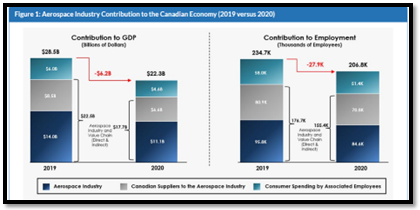
(Source: Government of Canada, 2021)
There is a profound difference like production and manufacturing of the aerospace industry which owes to differences in factor availability, trade agreement, transportation, and other comparative advantage elements.
Sources of Comparative Advantage
One of the comparative advantagesfor Canada is that former and US have integrated supply chains due to which the former earns high export earnings. Since the majority of exports are directed to the US, MRO sectors have witnessed high growth in the last few decades. In addition, agreements between US and Canada(US- Canada Bilateral Aviation Safety Agreement (BASA)) have made it easier for conducting business. Canada is also a signatory under Civil Aircraft Agreement (WTO) which ensures fair play amongst the nations. The mature market of the Canadian aerospace industry owes to its establishment from the year 1945- 1980 which was initially established for meeting the growing needs of the national military for which Avro Canada was created with efficient engine design for defense (ITA, 2020).
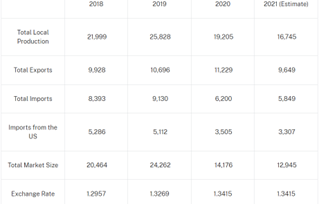
1:Total production
(Source: ITA, 2020).
On the contrary, the UK aerospace industry is different from that of Canada. It not only repairs and manufacturers defence aircraft but also designs commercial units. Thus, the technological development within the UK supports the designing and production of engines, wings, helicopters, aircraft systems, and others. Its excellence in engineering has made it a leader in nano and small satellites which are coupled with soaring investments in space technologies (International Aviation, 2019).
Considering both the countries, it can be said that the geographical location of Canada and the UK has provided comparative advantages. For instance, the US is closer to Canada while pre- Brexit period free entry in the UK from the EU helped the nations for conducting the business. In addition, technologies are more advanced in the UK than in Canada, hence the comparative advantage for the UK is higher.
Economies of Scale
In addition, the sources of comparative advantage could be explained with theories of economies of scale. In the works of Moon (2018), two types of economies of scale were explained which included external and internal. In this view, internal economies of scale refer to the reduction of costs per output relying on firm size while external economies are dependent on industry of size.
External Economies of Scale
The aerospace industry in both UK and Canada owes external economies of scale due to growth in passenger air flights owing to increasing demand and changing regulations. From the past few decades, the airline industry has witnessed high growth owing to changes in flier destinations, deregulations, uniform standards, and agreement networks amongst the nations (PHAM et al., 2021). US witness’s high passenger growth in domestic and international travel which impacts trade in the aerospace industry of Canada as it is under a bilateral trade agreement with the United States. Another factor of external economies of the scale includes an increase in military demands for which Canada provides the majority of aerospace products (ITA, 2020). Similarly, in European nations air travel has increased from past decades during a surging number of immigrants, visitors, and laborers traveling for personal and professional motives. After the United States, Europe is considered to be the largest air travel market for Asin countries.
Internal Economies of Scale
Both Canada and UK encompass the internal economies of scale, although the sectors are different. For instance, economies of scale in the commercial aerospace industry are low which positions the country in comparative disadvantage condition.Similarly for the UK, internal economies of scale are comparatively less in civil and military aerospace products which results in comparative disadvantage. In the UK, 3000 firms in the aerospace industry operate owing to small-medium size intermediaries in European regions. Before Brexit, the UK was in an advantageous position in the context of economies of scale as intermediary products could be easily procured from the European nation as goods and services were allowed a free pass across the borders (ITA, 2022). This is further supported by government initiatives like Aerospace Growth Partnership that has encouraged firms for cooperating their operations to detect issues and problems which boost UK exports. Space-related progress has been improving due to which UK commercial space industry was worth $22. 8 billion in the year 2020.
Technological enhancements and connectivity within the UK are higher than that of Canada which provides a higher comparative advantage for the former. On the contrary, the internal economies of scale can be only owed to effective collaboration of governments and industry which can provide a growth worth $7 billion, that will create more than 55, 000 jobs. The existing aerospace industry is largely impacted by pandemics, thus impetus from internal and external factors would increase its comparative advantage in civil aerospace products.
Improving Comparative Advantage
Concept of International Factor Mobility for improving trade
In addition to this, international factor movements are also important for improving labor mobility. International factor movement includes labor migration, transferring financial assets, and transactions amongst multinational corporations involving direct owners (Podrecca&Rossini, 2015). Labour is considered one of most factors on which output is dependent. Competitive markets like Canada and UK are capable of paying salaries of which purchasing power is equivalent to marginal productivity. Canada and UK both require a skilled workforce, although the population is density in such countries is less than compared to Asian economies. Also, countries experience high immigrants from varied economies of which India, China, Japan are common.
In the Asian economies, labor is cheaply available as the resources for education, job, and skill advancement, hence, many talented and skilled labor force work for more hours with less pay. In this view, labor productivity is highly dependent on the work amount and number of workforces working within the aerospace industry (Chaudhuri& Gupta, 2014). The marginal labor productivity of any individual workforce is equivalent output value produced (Hiscox, 2020). In the domestic country, if labor is abundant within the domestic country and other foreign countries have other resources, then the incentive for moving to that economy is higher (Navaretti&Venables, 2020).Also, the MPL that is the marginal productivity of labor forces is relatively less, due to which they would earn comparatively less owing to the technology and related factors of production. There is always an impetus for moving to labor deficit countries, this would only decline only with the differences in purchasing powers (Pi&Zhou, 2015). The figure given below states the differences in home and foreign employment, depicting the change inlabor productivity.
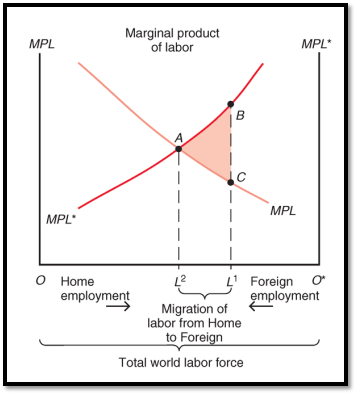
2: Marginal Productivity of Labour
(Source: Week 8 lecture notes)
The figure states that foreign output has increased from OL1 to OL2, while the domestic output has reduced within the MPL curve (OL2 to OL1 ). The theory suggests that an increase in world output can be maximized only if marginal labor productivity holds an equivalent position in all countries (that is home and a foreign country). Additionally, during post Brexit period, labor movement across EU borders was free, which enabled many manufacturers for hiring temporary or long-term employees at relatively lower costs. The marginal product labor productivity has provided evidence for governments of both countries are required to create trade agreements and collaboration with governments for supporting labor migration on work visas.
Although, post-Brexit labor laws have changed that restricts immigrants from the European region thereby putting pressure on economies of scale and comparative advantage. A similar situation is prevalent in Canada as pandemic has restricted international flying, hence immigration from varied countries is at a halt. In addition, immigration laws need to be relaxed from labor-abundant countries like Asian economies to ones with a deficit for improving trading relations and comparative advantage (Chaney, 2014). To this, Hecksher- Ohlin Model predicted trading in goods could provide the best alternatives for ensuring factor mobilities. It is considered that services as a factor of production are embedded with goods which ultimately reflects good value or productivity (Di Giovanni&Levchenko, 2012). This cannot hold with equalization with labor mobility due to varied assumptions made by Hecksher- Ohlin model.
• It assumes the same products are produced by the countries. In this case, both countries are operating in different segments of the aerospace industry. Europe is an indirect trading partner of Canada as (trading activities are generally connected with the United States).
• The model also assumes that trading economies are operating on the same technologies. In this view, the state of technologies of Canada and the UK varies.
• The model has assumed that barriers to immigration and transportation exist.
In both countries, bilateral trade agreements will help to improve comparative advantages. Canada conducts the majority of its business with the US owing to its trade agreements under WTO, thus, such agreement with other foreign nations for improving trading-related activities which positively influences the GDP rates (Baker, 2021). In addition, Brexit will severally impact trading relations of the UK with EU nations, hence, mutual- beneficial bilateral trade agreements with the EU need to be settled for reducing comparative disadvantage. It is to be remembered that the UK had been in a comparative advantage position when entry and to exist across the borders prevailed accompanied by low or no taxes on imports and exports of aerospace products. Although, Brexit was settled with no deal due to which has exposed its comparative disadvantage position.
The Flow of Trade and Investment
The flow of trade and investment can be related to demand and supply factors. It is assumed that the import demand curve refers to the difference in quantity demanded from home suppliers and producers. As the price for the product would increase, the demand for the same would decline. Considering the Brexitconditions in the UK, the price of aerospace products can be expected to rise due to changing political conditions, which might impact the demand (investment) for the product. On the contrary, the export supply curve would be differences in quantity demanded by suppliers and producers in the foreign market. Both the countries that are Canada and UK are export-oriented aerospace sectors, thereby any changes in prices would directly earn from abroad. Unlike, the import demand curve increase in price would result in a rise in export supplies. Thus, the flow of trade and investment is positive for both nations who are the epicentre of manufacture and design in the aerospace industry (Mansfield&Milner, 2012). Since both Canada and UK are engaged in the manufacturing and designing of defence sectors, thus it receives government aid. In the UK, trade, and investment are also received through foreign spaces due to its engagement in commercial repairs and manufacturing of aircraft.
Also, the investments in the UK are higher due to its advanced technologies which have resulted in the development of satellites, drones, and other advanced aero craft products.
Benefits to Australia
The gravity model depicts that economic size has a direct relation with import and export volumes. Thereby larger economies are engaged in the production and service in huge quantities, which improves its opportunity for selling in the market (Yabuuchi, 2015). Considering this theory trade with Canada and UK will have beneficial impacts owing to the size and nature of trading activities. This further strengthened from the free trade agreement with Canada in 2018 which provides Australia with huge trading opportunities. Also, Australia is a prominent member of the EU, hence trade relations and profound investment in the aerospace industry of the UK would enable the nation in procuring advanced aircraft and related products (International Aviation, 2019). Also, the UK is the nearest manufacturing unit through which transportation costs of aerospace products could be reduced. Some benefits for the flow of trade and investments are provided below.
• It reduces tariff barriers and leads to trade creation
• It increases export and imports and maintains a durable international relation
• It is effective to maintain the scale of positive economies
• It increases international competition
In addition, investments of £90 million in the aerospace industry by the UK would profoundly benefit Australia owing to the focus on lightweight parts that would help both nations reduce the use of fuel within the aircraft.
The aerospace industry of Canada is embarked on promising factors that could benefit Australia in the long run which are mentioned below.
• Aerospace is the main manufacturing unit employing 50, 000 workforce with additional laborers who have working maintenance and services.
• The aerospace industry of Canada enjoys a trade surplus that owes technology and machinery use coupled with high labor productivity.
• Innovation is high as 20 % of GDP is invested in research and development.
Conclusion
The aerospace industries have supported the world in witnessing growth and development. Both the UK and Canada have attributed to growth and development which owes to factors like collaboration, investment, rich culture, and history. Different factors of comparative advantages have been explained with economic theories like economies of scale, factor mobility, and gravity model. The benefits of trade relations of Canada and the UK are high for Australia owing to development, innovation, and investments encountered by the nations. Both UK and Canada are recommended for forming trade policies with labour-abundant countries to reap benefits of high productivity which will also improve economies of scale.Trade relations amongst Canada andUK are still in establishing stage as UK is no longer part of EU, hence countries are recommended to reconsider international factor mobility for creating trade relationships. In addition, both the countries are operating on different sector that is commercial and civil, hence trading can be conducted on the basis of comparative advantage theories. Since, Canada has efficient trade relation relations with EU, it should consider developing relations with UK for mobility like technology, skilled labour force, innovation to expand its aerospace industry. Both the parties will benefit from trade, owing to the prevalence of comparative disadvantage.
Reference List
Baker, N., 2021. Canadian Aerospace Industry. [online] Available at: <https://www.thecanadianencyclopedia.ca/en/article/aerospace-industry> [Accessed 11 Jan 2022].
Chaney, T., 2014. The network structure of international trade. American Economic Review, 104(11), pp.3600-3634.https://mpra.ub.uni-muenchen.de/32682/1/MPRA_paper_32682.pdf
Chaudhuri, S. and Gupta, M.R., 2014. International factor mobility, informal interest rate, and capital market imperfection: a general equilibrium analysis. Economic Modelling, 37, pp.184-192.
Conversable Economist: Ricardo's Comparative Advantage After Two Centuries. 2017. Chatham: Newstex. https://www.proquest.com/docview/1977077407/8167A5CE10E549A0PQ/2?accountid=30552
Destatis, 2020. Foreign trade. [online] Available at: <https://www.destatis.de/EN/Themes/Economy/Foreign-Trade/_node.html> [Accessed 11 Jan 2022].
Di Giovanni, J. and Levchenko, A.A., 2012. Country size, international trade, and aggregate fluctuations in granular economies. Journal of Political Economy, 120(6), pp.1083-1132.
Government of Canada, 2021. State of Canada's Aerospace Industry. [online] Available at: <https://www.ic.gc.ca/eic/site/ad-ad.nsf/eng/h_ad03964.html> [Accessed 11 Jan 2022].
Hiscox, M.J., 2020. International trade and political conflict. Princeton University Press.https://www.google.co.in/books/edition/International_Trade_and_Political_Confli/XdPgDwAAQBAJ?hl=en&gbpv=1&dq=international+Trade+and+Political+Conflict&printsec=frontcover
International Aviation, 2019. Why were there so many aircraft manufacturers in the UK in the 1950s? [online] Available at: <https://internationalaviationhq.com/2019/09/07/aircraft-manufacturers-in-the-uk/> [Accessed 11 Jan 2022].
ITA, 2020. Canada - Country Commercial Guide. [online] Available at: <https://www.trade.gov/country-commercial-guides/canada-aerospace-and-defense> [Accessed 11 Jan 2022].
ITA, 2022. United Kingdom - Country Commercial Guide. [online] Available at: <https://www.trade.gov/country-commercial-guides/united-kingdom-aerospace-and-defense> [Accessed 11 Jan 2022].
Mansfield, E.D., and Milner, H.V., 2012. Votes, vetoes, and the political economy of international trade agreements. Princeton University Press.https://www.google.co.in/books/edition/Votes_Vetoes_and_the_Political_Economy_o/FnZh_iCZDs0C?hl=en&gbpv=1&dq=Mansfield,+E.D.,+and+Milner,+H.V.,+2012.+Votes,+vetoes,+and+the+political+economy+of+international+trade+agreements.+Princeton+University+Press.&printsec=frontcover
Moon, B.E., 2018. Dilemmas of international trade. Routledge.https://www.google.co.in/books/edition/Dilemmas_Of_International_Trade/WVJPDwAAQBAJ?hl=en&gbpv=1&dq=Moon,+B.E.,+2018.+Dilemmas+of+international+trade.+Routledge.&pg=PT12&printsec=frontcover
Navaretti, G.B. and Venables, A.J., 2020. Multinational firms in the world economy. Princeton University Press.https://www.google.co.in/books/edition/Multinational_Firms_in_the_World_Economy/q27dDwAAQBAJ?hl=en&gbpv=1&dq=.+Multinational+firms+in+the+world+economy.&printsec=frontcover
Pham, V., Woodland, A. and Caselli, M., 2021. Exceptional performance of multinational suppliers: theory and evidence. Review of World Economics, 157(2), pp. 221-269.https://doi.org/10.1007/s10290-020-00399-7
Pi, J. and Zhou, Y., 2015. International factor mobility, production cost components, and wage inequality. The BE Journal of Economic Analysis & Policy, 15(2), pp.503-522.https://doi.org/10.1515/bejeap-2014-0006
PODRECCA, E. and ROSSINI, G., 2015. International Factor Mobility, Wages and Prices. Review of Development Economics, 19(3), pp. 683-694. https://www.proquest.com/docview/1696144708/1BBAB2C138824558PQ/1?accountid=30552
Watson, M., 2017. Historicising Ricardo's comparative advantage theory, challenging the normative foundations of liberal International Political Economy. New Political Economy, 22(3), pp. 257-272. https://www.proquest.com/docview/1883144812/8167A5CE10E549A0PQ/1?accountid=30552
Yabuuchi, S., 2015. Globalization, International Factor Mobility, and Wage Inequality. Journal of Economic Integration, 30(3), pp. 577-590.https://www.proquest.com/docview/1898683750/1BBAB2C138824558PQ/2?accountid=30552
HI5003 Economics for Business Assignment Sample
Assignment Brief
Purpose of the assessment (with ULO Mapping)
i. Students are required to work in groups of 4 members to choose an industry/Sector of their choice. While working in a specific group, students are required to apply their knowledge learned in the course unit to write an industry/sector report (Learning Outcomes 1, 2, 3, 5).
ii. Also, students may choose to work as individual. In this regard, contact the Unit Coordinator specifying that you are working on your Group Assignment as INDIVIDUAL and not group.
iii. Finally, students should form their respective groups in the BB as INDIVIDUAL or GROUP of: 2 members or 3 members or 4 members, maximum.
See Assignment Specifications for detailed requirements
WEIGHT - 40%
Word Limit - 3000
Final industry research submission
(i) Due date: Week 10, Mid night Friday, May 28, 2021
(ii) Final submission research paper on you sector or industry should not exceed 3000 words
(iii) The assignment must be in MS Word format, single spacing, 12-pt Arial font and 2 cm margins on all four sides of the page with appropriate section headings and page numbers.
(iv) Reference sources must be cited in the text of the report, and listed appropriately at the end in a reference list using Harvard referencing style.
(v) Penalties apply for late submissions.
(vi) Students in a group are required to participate equitably in the group assignment and that students are responsible for the academic integrity of all components of the assignment. You need to complete the following table which identifies which student/students are responsible for the various sections of the assignment
Purpose:
This assignment aims to enhance students’ research and analytical ability through the application of their economics knowledge learned in the course unit to compose a company report.
The recommended assignment structure of final submission for assignment help is as follows:
• Table of content
• Executive Summary (Optional)
• Introduction
• Introduction to the company
• Industry/sector background
• The market structure of the industry/sector
• Factors that influence demand for the company’s product(s) or services
• Factors that influence supply of the company’s product(s) or services
• Elasticity
• Recent macroeconomic event that affected the industry/company and, Australia
• Recommendations
• Conclusion
• List of References.
Note*: The structure content is not limited to the items listed above. Creativity for a better report structure is a key requirement.
Detailed requirements of the assignment
You are a group of advisors to the Management Board in your company with Headquarters in Australia. As advisors you are first, required to conduct research on your selected sector/industry covering the previous 5-10 years. Second, you are required to present a company strategy to your Management Board covering the next 5 years. Third, your Management Board requires that you make a presentation of your findings and strategies, and you prepare a 3000-word market report. The market report should, as a minimum, address the following key issues:
Solution
Introduction
Economical management focuses on the level of growing demand, supply and macroeconomic event based on which the complete source of business in any industry is established. Moreover, the general scenario of economic development in the Dental industry is grabbed within the general and specialized services that cover up the complete market of Australia. This business report is based on an evaluation of the dental service industry and its macroeconomic analysis in the current business scenario. The dental industry focuses on maintaining and managing the oral health of the public that is highly developed across Australia. There isa total of 15000 private businesses that are running in both the rural and urban industry and one such company is Malo Clinic Brisbane that is being considered in this complete report. There are various services that are being provided by the company; however, this report only includes the economic scenario of CAD or computer-aided technology and its associated services such as Cast Partial Dentures (CPD) and many more.
Introduction to Malo Clinic Brisbane
Malo Clinic Brisbane is one of the largest dental companies in complete Australia that even focuses on the international markets. In the current scenario, the head office of Malo Clinic Brisbane Dental Lab is located in the Brisbance region of Australia. The company mainly focuses on providing specific dental prosthetic and other services associated with products such as Luminers, Valplast, biomedical grades and many more (Gcr.org, 2021). The company first introduced the concept of casting machine that changed the era of complete prostheses. Moreover, casting partial dentures (CPD), prosthetics, Laser-welding machine and many more made it grow its own way of perception in the global market. Later the huge innovative revolution in dentistry changed the view of people with elongation of CAD or computer-aided technology. Other than Australia, Malo Clinic Brisbane is actively working in more new regions with Better and specific staff. The vision of the company is to elevate the global population experience in the field of the dental fraternity as well as focus on establishing everlasting smile. In addition to this, the fraternity is maintained with the help of specific research and development (R&D), innovation, corporate social responsibility, and many more. In addition to this, Computer-aided technology (CAD) is an innovation that is highly being focused on by the Company.
Background of the Dental care service industry
The dental service industry is one of the branches of the Healthcare service industry that only concentrates on the issues and services of oral health. This is relatively a growing branch in the business of health services where the urban need is increasing with the simultaneous growth in the demand. There is more demand in the urban region than in the rural region in complete Australia. The market is majorly favored in the metropolitan areas and associated regions. Various new changes have appeared in this business sense where not only Dental health workers persist in the market; rather a dental hygienist, technician, and therapist role has initiated the growth of more than 36400 jobs by 2024 (Marcin, 2021, 145(2)).
In the current situation there are a total of 16400 dental practitioners in Australia; where 84% of them are focused only the private firms such as the Malo Clinic Brisbane. Thus 47% of the complete professionals are employed where on every 10 dental professionals 4 of them are female making it a count of overall 44% (Esfahani&Moosaali, 2016, p2(2)).
Market structure of the Dental service industry
There is an emerging market for the dental service industry in Australia. Two major types of dental services are being offered in the market; private and public. The government has introduced schemes in order to keep the dental safety of people. However, the demand for private streamlines is huge that even forced the people to take loans or insurance in order to keep the dental health. Thus, only 3% of the overall population encounters the development and management of dental health. On this note, it is to be noted that the Dental Service Industry in Australia is merely a representation of a perfectly competitive market scenario (Gmeiner, 2021, p.263(3)). In real terms, there exists an oversupply of dentists in Australia as a result of the exponentially increasing number of students entering Australian dental schools from time to time. On the demand side, due to the increased ageing population in Australia, there seems to be a rise in a number of dental implants and oral surgeries being performed. This, in a way, enables the Dental service industry to maintain somewhat an equilibrium position. The dental services are forecasted to the steady growth of a disposable income and demand for dental health services. In Australia, the majority of the demand is based on demographic and population ratio. Children, Toddlers and adolescents more likely to concentrate on consulting a dental professional as compared with the demand of adults (Fouda et al., 2017, p748(3)). In Australia, public services and private services mainly rule the complete market of the Dental industry. Here, companies such as Dentalife, Tut Skul and many more are the major leads off the market. However, Giants such as Henry Schein and Dentsply Sirona are some major leaders of this overall market.
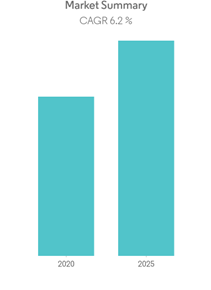
Figure 1: Market Summary of Dental Industry in Australia
(Source: Fouda et al., 2017, p748(3))
The above image illustrates that during 2018-2026, the size of dental industry is heavily increasing with the base year of 2020. The total CAGR is hence calculated to be 6.2%. The total market size of dental services in Australia is $10.1 billion in 2021. It contributes to 0.8% in the overall GDP of the Australia (Windle et al., 2018, p338(2)). Thus, in odd sense of complete and holistic health, dental health industry is growing with increasing occupational demands into the complete statistics of market of healthcare industry in the Australia.
Factors that influence demand for the Malo Clinic Brisbane
Malo Clinic Brisbane is developing with the increasing demand for the dental services in the Australia. The following factors have initiated the scene of increasing demand in the Australian market:
? Aging Population: Australia has a huge amount of increasing aging population that automatically changed the view of dental implants and dental surgery. Moreover, growing age leads to the senescent stage of cellular growth, where resistance towards new cells increases. This ultimately leads to damage in the Gum and dentine region increasing the demand forMalo Clinic Brisbane prosthetics and dentition surgeries. Moreover, there is a huge decrease in manual dexterity as well as it is being seen that the ageing population are being constantly affected by Co-morbidity. The medication of co-morbidity affects the longevity of dentine that increases the business demand (Hutter, 2021, p.56(2)).
? Increasing demand for oral hygiene: Oral hygiene is the recent trend that has attracted people to easily tend towards the business of dental modification and CAD treatment as used in the Malo Clinic Brisbane Dental labs. People especially with the risk factors of tobacco, odour mouth, smoking, dentine spaces and many more are seeking the Malo Clinic Brisbane for proper medications, surgery and other such tools. This dental caries is growing across the population gradient were diabetes and hypertension-related dental issues are continuously being encountered within the diameter of demand ratio.
? Trends in the prosthodontics segment: The market is gradually dependent upon the changes in the elevation of the treatment protocol. Here, in Malo Clinic Brisbane, the complete orthodontic, endodontic, periodontics and prosthodontics are all based on the R&D and innovation scenario. The major factor that has contributed to the increasing demand of prosthodontics is the prosthetics and demand for good look across the country. Thus, the presence of professional dental service has changed the way human perceived till date. These enhanced the way demand has increased in the Malo Clinic Brisbane (Esfahani and Moosaali, 2016, p.45(2)).
? Competitive Landscape: Dental profession is highly filled with competition. Not only big firms but professional, the public health sector, private practitioner and many more are still in this competitive market. Making a strong presence demands huge population interest that is achieved with the growth of CSR, CAD and other innovative tools that has changed the point of view of demand in the Malo Clinic Brisbane Dental Labs in Australia.
Thus, the above points illustrate a figure of growing demand of Malo Clinic Brisbane Dental Labs in entire Australia. Thus, the increasing demand is relatively focused on the management of complete supply. With the increasing demand of Malo Clinic Brisbane, the CAD services also come up with the inclined demand as the innovation for prosthetics and surgery increased. Meanwhile, dentine formation, gum restoration, artificial crown, and many more came up with this demand to manage the growing need. The dental laboratory hence increased to enhance their CAD services.
Factors that influence the supply of Malo Clinic Brisbane
Supply and demand are interrelated concepts where the growing demand increases the urge to enhance the supply and accordingly the balance between the profit and the revenue in the dental industry can be maintained. Subsequently, it is also seen that the Dental labour force model has changed the ratio of supply and demand in Malo Clinic Brisbane while operating in Australia.
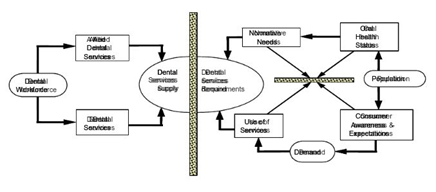
Figure 2: Relationship between Supply and Demand of Malo Clinic Brisbane
(Source: Lalloo& Kroon, 2017, p200(2))
The above image illustrates that the overall supply of the services has relied upon the Dental professional where they focus on Avoidance and management. Whereas the ratio of demand is based on the quantified elaboration of needs, oral health issues, consumer awareness, and many more factors as well as their expectations have changed the viewpoint of Malo Clinic Brisbane in Australia. So, the projection of supply of Malo Clinic Brisbane services is dependent upon the inflows and outflows of the stock of innovation, labour, and many more (Hutter, 2021, p.23(2)).
In order to focus on the scenario of supply management in Malo Clinic Brisbane, the following factors have enhanced the way of business perception and growth:
? Increasing demand: In the recent decade of changing performance, the demand for service of Malo Clinic Brisbane and dental health has increased in complete Australia. This in turn initiates the revolving factors of supply to manage the intense market. Moreover, the population increasing age, co-morbidity, and many more such manipulative factors have forced the growth of supply. These factors have also changed the view of innovation where the response to the demand and others is highly important for Malo Clinic Brisbane to remain in the market (Fouda et al., 2017, p.747(3)).
? Research & Development: Malo Clinic Brisbane Dental Labs have always focused on new scales of managing the condition of their patients. This demand supplement is changed with the view of innovation. Moreover, the demand in R&D and equipment management in Australia is completely closely tied to the demand and supply ratio. The development of CAD or computer-aided diagnosis is based on such factors that have enhanced its supply within Australia.
? Dental Labour: This is a highly important stock in the overall Australian dental channel as the Human resources supply is essential to maintain the demands (Lalloo and Kroon, 2017, p.202(2)). Malo Clinic Brisbane focuses on keeping a stock of such expertise to handle the complete organizational demand with more care.
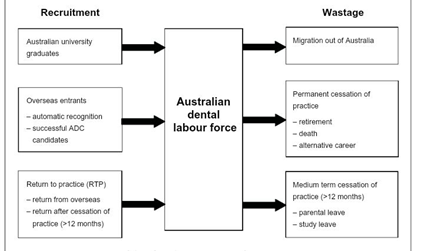
Figure 3: Dental recruitment and wastage supply model
(Source: Mbagwu et al., 2019, p1(2))
The above image is a flowchart explanation of how the new recruitments of dental labour can help the business of Malo Clinic Brisbane to focus on better supply. However, the change in panel can increase the risk of competition from those practitioners itself. Thus, after university graduates, the competition in the market increases that affects the supply of Malo Clinic Brisbane services in Australia.
? Allied demand in Dental services: There are various allied health workers such as staffs and other laboratory managers that are important for the supply of better services. In Australia, there are a total of 16400 dental practitioners and 2700 allied health workers that are actively important to aid the overall oral health of any people (Barenghi, et al., 2019, p3(2)). Here, both the factors such as the recruitment and the wastage vector permit the overall sensation of business development.
However, the balance between demand and supply is the major factor that makes up the complete economic development of Malo Clinic Brisbane in Australia.
Elasticity
In this context, cast partial Dentures to involve a cast metal framework containing artificial teeth set in an acrylic resin. The fact that such a dental procedure is more durable, stronger and retentive enhances the demand for it in the Australian market in recent times. It is substantial population growth and relative increase in life expectancy that indicates a growing need for such cast partial dentures.
However, taking the overall market scenario into consideration, the demand for it is observed to be elastic by nature (Andruszkiewicz et al., 2019). Widespread demand for fixed Prosthodontics is seen to show a drastic downfall in deliverance of cast partial denture as a mere treatment option in a number of partial edentulous situations (Laetitia et al., 2019, 23(2)).
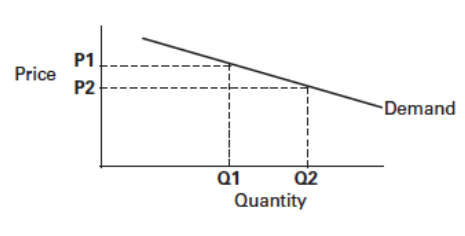
Figure 4: Elastic Demand for Cast Partial Dentures
(Source: Laetitia et al., 2019, 23(3))
From the above figure, it can be deduced that a rise in price level from P2 to P1 corresponds to a higher degradation in quantity demanded for cast partial dentures from Q2 to Q1 thus representing its elastic nature in a way. This might have mainly been a result of people showing willingness to switch over to the superior ones available in the market on increase in its price level (Marcin, 2021, p.36(2)).
Recent macroeconomic event that affected the Malo Clinic Brisbane
The growing oral health issues encountered the development of several preventive measures that the dentistry system accepts as CAD. The CAD program in the co-morbidity scenario was an important event that was focused by Malo Clinic Brisbane in Australia in order to control the oral health issues that affected majority of the Australians during the growing age as well as reflected on slow generation of disease. This macroeconomic event of CAD is still promoted by the Australian Dental association where emergency protocol CAD such as crowning and many more are being still provided in Malo Clinic Brisbane that has completely changed the viewpoint of people towards the health statistics (Igna, et al., 2018, p66(2)). CAD or computer-aided technology emerged as a technological profit where the company fastened their work of developing new crowns, tooth replacement and many more surgeries. Thus, the growth of the CAD program took a change with the growth and installation of exhibitions and other macroeconomic development that showcased the entire innovative scenario controlling the huge competition in the market.
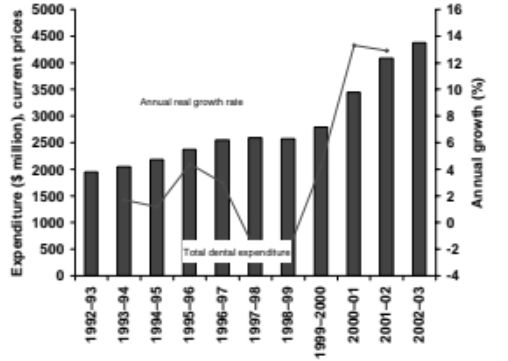
Figure 5: CAD/CAM technology
(Source: Adriana Postiglione et al., 2016, p3(1))
In addition to this, the growth of the dental labour is one of the important factors along with the scenario of management of demand and supply is also one of the major macroeconomic events in the Malo Clinic Brisbane based on which the complete economic development is changing. Preventive measures and innovation helped people to come to new places and settle along with increasing the market region for the Malo Clinic Brisbane (Al-Mussawi& Farid, 2016, p216(2)). Thus, with the growing demand, the structure of dental restoration emerged that made it important and changed the complete scenario of Malo Clinic Brisbane in the market. The technological advancement emphasized on the scenario of improving the designs and creating dental prostheses such as crows, crown lays veneers, inlays and outlays, dentures, and other orthodontics appliances.
The macroeconomic event has changed the market structure from 2016, where the demand is highly increasing to lower down the risk, increase productivity and manage the complete business market infrastructure accordingly (Parello, 2021, p.33(1)). CAM refers to the process of computer-aided manufacturing where artificial prosthetics, tooth replacement, manufacturing of crowns and many more are done. In dentistry, the innovation of CAD/CAM changed the perception of diagnosis and manufacturing that automatically led to the emergence in success and management of patients.
Recommendation
Focusing on the above context, it can be recommended that
- Malo Clinic Brisbane can focus on new innovations and R&D with CAD/CAM dentistry that can change the vision of total management and proper leadership. This calls for availability of scope for slight adjustments that are largely needed at time of Cast Partial Dentures in order to alleviate discomfort or pain.
- Malo Clinic Brisbane can even focus on proper recruitment of new expertise to control the growing competition in the Australian Market. Here, the development of allied health experts is also essential and can be focused to clearly aid the expertise. This holds essential in order to match the level of expectation of the individuals visiting the place at large.
- Proper advertisement and marketing policies can be used by Malo Clinic Brisbane in order to effectively build up the business. Awareness needs to be spread with regard to the fact that rehabilitation of a partially dentate patient is a vital form of dental treatment that is expected with competence from every qualified dentist and Malo Clinic Brisbane is the perfect place for it.
Conclusion
At the end of the overall discussion, it can be concluded that the dental industry is one of the growing industries in the Australia with major demands in the metropolitan cities with a probability that the economic growth can be easily managed. In this regard, Malo Clinic Brisbane is one such organization of Australia that is extended towards the international borders. Factors such as demographics, aging population and many more have increased the demand of Malo Clinic Brisbane in Australia. Similarly, supply is also enhanced with the evolution of CAD/CAM technology that changed the total scenario of macroeconomic development in the industry.
Reference List
A Fouda, G Fiorentini, F Paolucci (2017), Competitive Health Markets and Risk Equalisation in Australia: Lessons Learnt from Other Countries, Applied Health Economics and Health Policy, vol. 15, no. 6, pp. 745-754, https://www.proquest.com/docview/1990434605/2B4F512805F04B9DPQ/1?accountid=30552
A Igna, C Todea, E Ogodescu, A Porumb, B Dragomir, C Savin, S Ro?u (2018), DIGITAL TECHNOLOGY IN PAEDIATRIC DENTISTRY AND ORTHODONTICS, International Journal of Medical Dentistry, vol. 8, no. 2, pp. 61-68, https://www.proquest.com/docview/2091281274/A7300D7EC0004D30PQ/1?accountid=30552
A Windle, M Fisher, T Freeman, F Baum, S Javanparast, A Kay, M Kidd (2018), Increased private health fund involvement in Australia's primary health care: Implications for health equity, Australian Journal of Social Issues, vol. 53, no. 4, pp. 338, https://www.proquest.com/docview/2164988008/F55AC83A0A04B24PQ/1?accountid=30552
BS Adriana Postiglione, E Morais, RF Mazur, SR Vieira, NR Rodrigo (2016), CAD/CAM in dentistry - a critical review, RevistaOdontoCiencia, vol. 31, no. 3, https://www.proquest.com/docview/1904767610/CC9F79A5A3984930PQ/1?accountid=30552
C Hutter (2021), Cyclicality of labour market search: A new big data approach, Journal for Labour Market Research, vol. 55, no. 1, doi:http://dx.doi.org/10.1186/s12651-020-00283-9, https://www.proquest.com/docview/2480025869/CBF71E8389764741PQ/1?accountid=30552
CP Parello (2021). Free labor mobility and indeterminacy in models of neoclassical growth, Journal of Economics, vol. 133, no. 1, pp. 27-46, doi:http://dx.doi.org/10.1007/s00712-020-00728-2, https://www.proquest.com/docview/2520050028/56C5E425954146EBPQ/1?accountid=30552
CR Laetitia, P Ditlopo, JA White, D. Blaauw (2019), Socio-economic characteristics and career intentions of the WiSDOM health professional cohort in South Africa, PLoS One, vol. 14, no. 10, https://www.proquest.com/docview/2307382405/D826088CF002456DPQ/1?accountid=30552
FC Mbagwu, IB Okoye, GC Umunnakwe (2019), Oral health disease and library service delivery among library staff of the universities in Nigeria, Library Philosophy and Practice, pp. 1-18, https://www.proquest.com/docview/2216870413/78910966B850407FPQ/1?accountid=30552
Gcr.org 2021, Malo Clinic Brisbane. Available at: https://gcr.org/c/malo-clinic-brisbane-brisbane-city [Accessed on 19.05.2021]
J Andruszkiewicz, J Lorenc, A Weychan (2019), Demand price elasticity of residential electricity consumers with zonal tariff settlement based on their load profiles, Energies, 12(22) doi:http://dx.doi.org/10.3390/en12224317, https://www.proquest.com/docview/2317091839/C4211B91FCA943DAPQ/3?accountid=30552
L Barenghi, A Barenghi, C Cadeo, AD Blasio (2019), Innovation by Computer-Aided Design/Computer-Aided Manufacturing Technology: A Look at Infection Prevention in Dental Settings, BioMed Research International, vol. 2019, pp. 15, https://www.proquest.com/docview/2275055836/B6BC18163E5F45D9PQ/1?accountid=30552
OF Esfahani, F Moosaali (2016), Awareness and knowledge of patients toward dental implants as an option in replacing missing teeth: A survey in Kerman, Iran, Journal of Periodontology & Implant Dentistry, vol. 8, no. 2, pp. 43-48, https://www.proquest.com/docview/1891270144/5B9BC1D3CD794BA2PQ/1?accountid=30552
Q Grundy, S Mazzarello, S Brennenstuhl, EA Karanges (2021), A comparison of educational events for physicians and nurses in Australia sponsored by opioid manufacturers, PLoS One, vol. 16, no. 3, https://www.proquest.com/docview/2502780894/82D6A668F22C459CPQ/1?accountid=30552
R Al-Mussawi, F Farid (2016), Computer-Based Technologies in Dentistry: Types and Applications, Journal of dentistry, vol. 13, no. 3, pp. 215-222, https://www.proquest.com/docview/1836549507/FEDCD20D82CA4476PQ/1?accountid=30552
R Gmeiner (2021), Amimetic assets and persistent profits under competition, Review of Austrian Economics, vol. 34, no. 2, pp. 253-277, doi:http://dx.doi.org/10.1007/s11138-019-00470-z, https://www.proquest.com/docview/2521815895/2EB4AEA4DCE94247PQ/1?accountid=30552
R Lalloo, J Kroon (2017), Impact of dental National Partnership Agreements on public dental service waiting lists in Queensland, Australian and New Zealand Journal of Public Health, vol. 41, no. 2, pp. 199-203, https://www.proquest.com/docview/2290216613/9E7DC428BD64D99PQ/1?accountid=30552
W Marcin (2021), Spatial matching on the urban labor market: Estimates with unique micro data, Journal for Labour Market Research, vol. 55, no. 1, doi:http://dx.doi.org/10.1186/s12651-021-00293-1, https://www.proquest.com/docview/2509109532/EF94543E988440E5PQ/1?accountid=30552




.png)
~5.png)
.png)
~1.png)























































.png)






